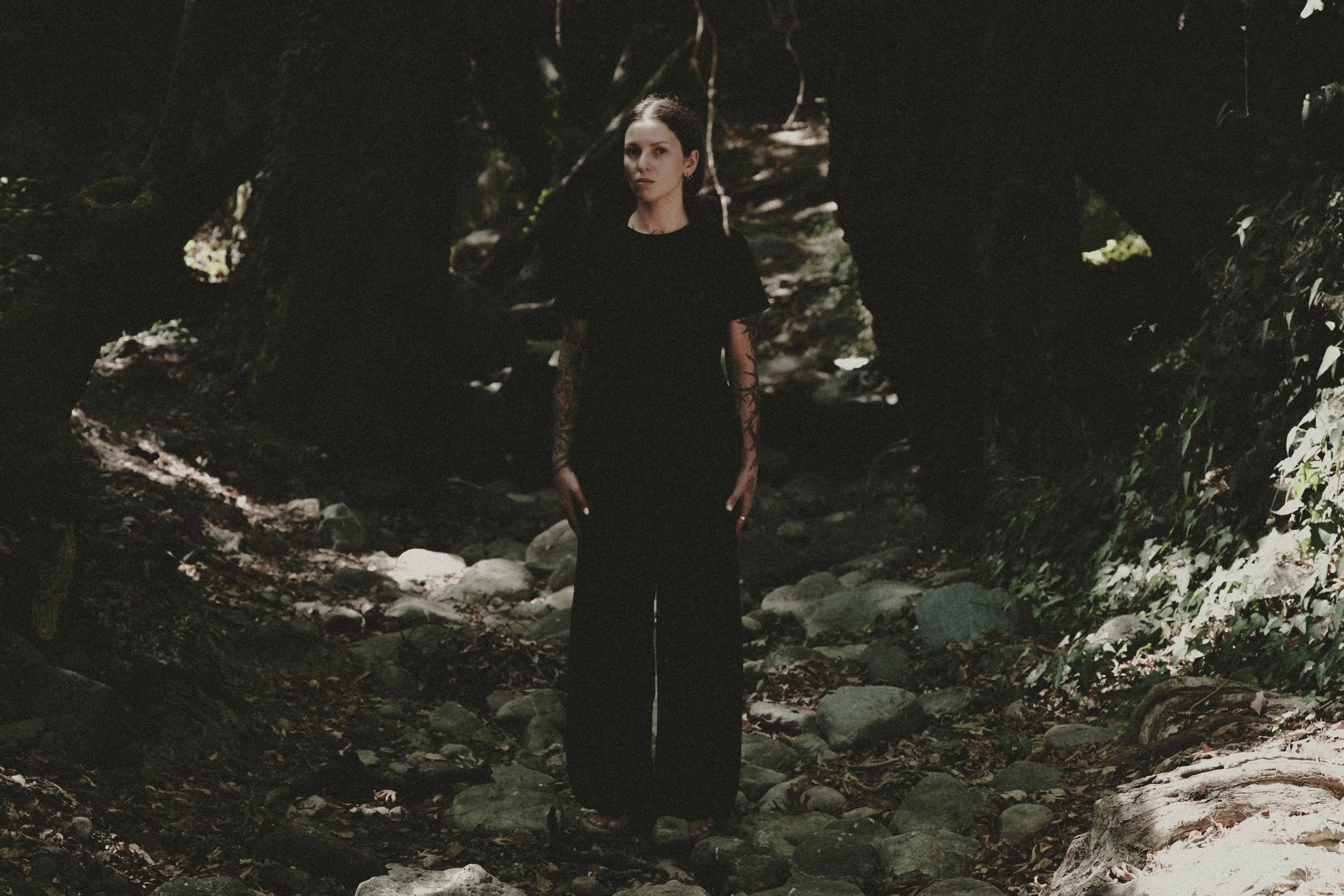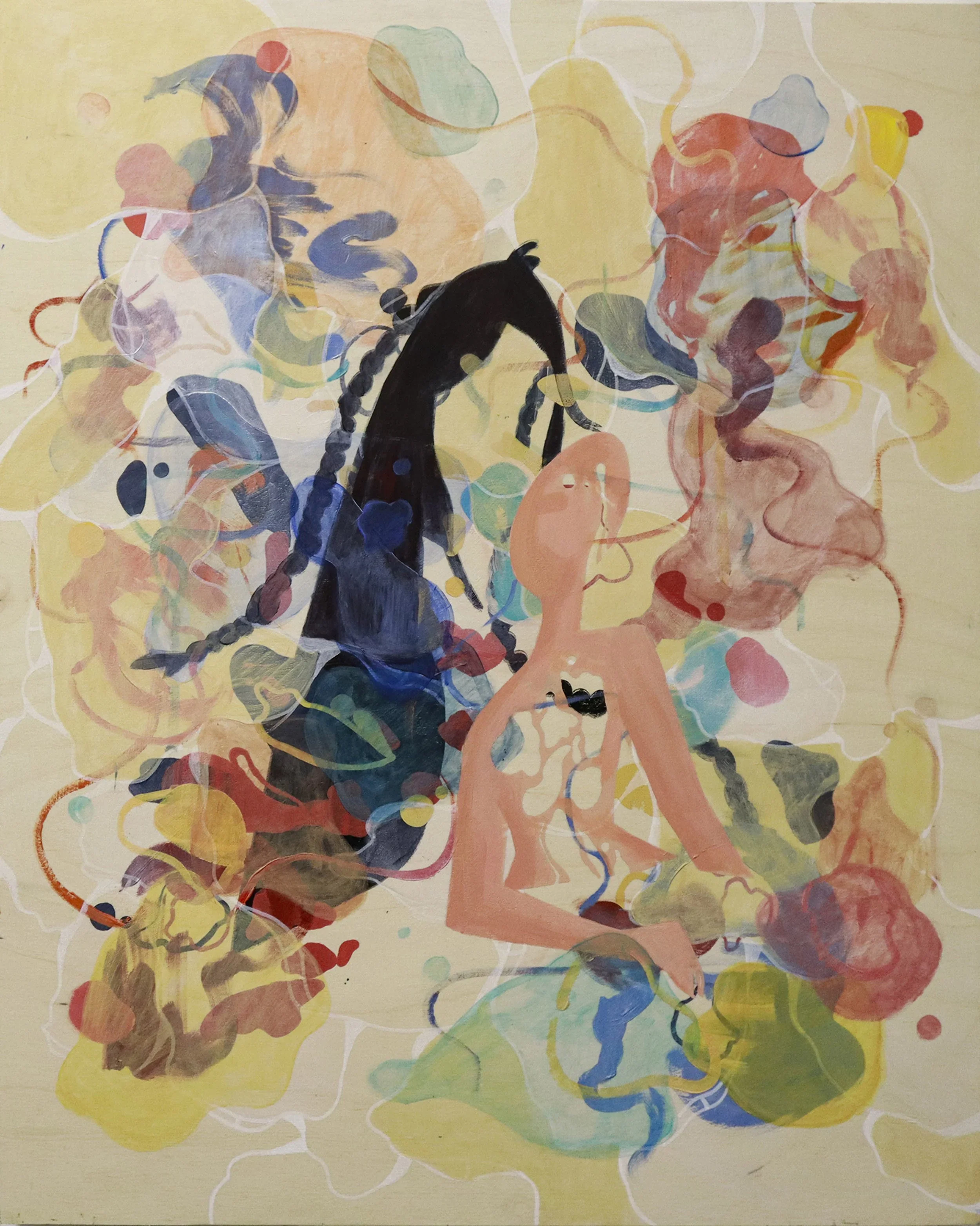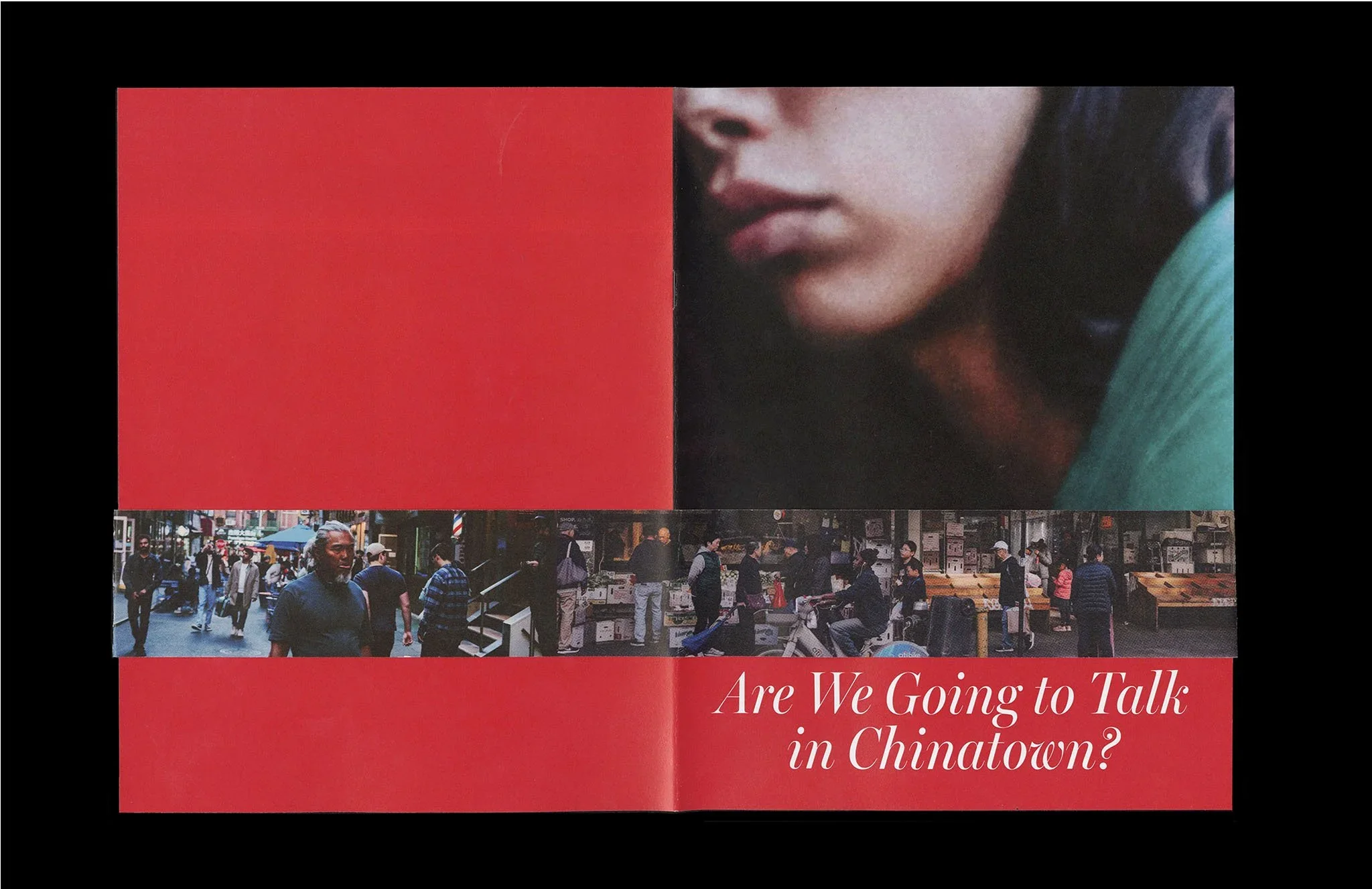10 Questions with Nat Lap
Nat Lap is an artist and trained director originally from Belarus. She graduated from the Academy of Arts with a degree in directing, which deeply influences her visual storytelling and compositional approach. Before emigrating, she took part in several group art initiatives and projects in Belarus.
Since 2021, she has been living and working in Cyprus, where her work has been featured in multiple group exhibitions. Nat Lap’s practice explores personal themes, anxiety, and the fragility of perception through mixed media, photography, and digital collage.
A key element of her work is capturing movement and inner dynamics in the stillness of observation, preserving the fleeting tension of a moment.
Nat Lap - Portrait
ARTIST STATEMENT
Anxiety, for this artist, is not only a recurring presence but also a lens through which the world is understood. Rather than viewing it solely as a limitation, she treats it as a gateway to deeper perception, one that reveals the fragility and ambiguity of existence. Her practice explores mental states through photography, scanning, and AI-driven collage, transforming internal tension into tangible, reflective objects. At the heart of her work lies a fascination with the impermanence of life, its constant motion, and its final dissolution, understood not as an end, but as a return to the cycles of decay and regeneration.
Her process is shaped by existential fears: the unknown, the instability of identity, and the body’s limits. Yet rather than seeking resolution, she embraces the contradictions, mirroring the complex choreography of the human psyche. The result is a visual language of delicate tension, where personal vulnerability becomes a universal meditation on transformation.
Waves, Scan Collage, 50x50 cm, 2025 © Nat Lap
INTERVIEW
Let’s start with your background. You trained as a director at the Academy of Arts in Belarus. How has that experience shaped the way you approach visual storytelling in your art?
My background in directing, storytelling, acting, and visual narration is not just a set of skills; it’s the lens through which I see the world, my way of sensing and stress-testing reality.
In every frame and every glance, I look for meaning: every element has a motivation, light has its dramaturgy, and a pause has its function. My aim is to catch both external and internal cues and thread them onto a framework in which the surrounding reality becomes ordered and a little more legible.
Within the frame, everything must be organised and governed by logic, and that is precisely how it contrasts with reality. Reality is subject to entropy. I don’t smooth over this disintegration; I accept it and merge with it, seeking to reconcile chaos with rhythm, light, scale, and negative space through the prism of my own feelings and experiences. I look for meaning in found objects, in a chance movement or glint, in the rhythm that emerges from motion, in texture. Repetitions, glitches, overlays, and ellipses create an inner motion, a sense, a feeling, the pulse of life.
I approach anxiety in the same way. I don’t try to “defeat” it; I’m interested in its trajectory. I register the vibration of the state, through shifts of scale, blurred motion, ruptures in sequence, the “breath” of light. My experience working with actors helps me articulate nuance, gesture, and pause.
A director’s perspective gives me a coordinate system where order and decay meet. I build a framework of meaning, composition and rhythm, while reality brings unruly facts and accidents. Somewhere between them, my story is born.
ABC A, Scan Collage AI, 50x70 cm, 2025 © Nat Lap
ABC B, Scan Collage AI, 50x70 cm, 2025 © Nat Lap
Since relocating to Cyprus in 2021, how has living and working there influenced your artistic practice?
Moving to Cyprus changed me profoundly: it became a place that gave me physical and mental safety, set in motion the acceptance of losing my home and past, made me aware of my separation from previous experience, and became the place where I am assembling my identity anew.
After 2020, Belarus was no longer safe; the democratic revolution is still unfolding, and the consequences of the protests remain horrific. No one feels secure anymore, and no one can say or do anything that might draw attention. A toxic regime forced many of us to endure both personal and collective trauma. That experience, together with emigration, intensified my anxiety disorder. Emigration is never easy; it is always unique for each of us and, at the same time, seems insignificant on a larger scale. I felt an immense fear of dissolving, of getting lost in historical and geographical layers. I saw only two uncompromising paths with painful clarity: sublimation or being consumed by that fear.
Choosing sublimation, my inner state renewed and became more suitable for careful observation. Lived experience, reflection, and sufficient safety allowed me to ground myself, to “lie in wait,” and to observe internal transformations, the farewell to the old and the emergence of the new.
Here I am learning to see what is right before my eyes, under my feet, around me; to look at the world through the lens of accepting inner turbulence and to build a dialogue with it. I was able to focus on the optics I chose and found a form attuned to the rhythm of the wave and jagged like mountain peaks, a form in which pauses and long glides are necessary, only to break off.
Cyprus, which has become my home, has created a stark backdrop for insight, reflection, and the visualisation of my inner states. Neither it nor I judge or rush anymore for being filled with feelings, fears, losses, and future possibilities, for inner instability; we normalise this condition, regardless of whether we can cope with it in the moments when it takes our breath away.
How would you describe yourself as an artist nowadays?
Today, I am an artist exploring personal themes, anxiety, and the fragility of perception. I work with mixed media, photography, scanning, and digital collage with AI. What matters to me is to capture movement and inner dynamics within the stillness of looking, to preserve the fleeting tension of a moment.
My method is to tune chaos through rhythm, composition, and pauses to register a state, shift scale, and bring glitches, pauses, and imperfections to the fore, granting them the right to exist rather than hiding them, and making them the centre of the composition.
Thus, order and decay meet within a single coordinate system. Material honesty, clarity of form, and the right to vulnerability are essential to me; from them, a story emerges that continues beyond the image. My practice is shaped by existential fears and experiences of instability, yet instead of final answers, I accept contradictions.
At its core is an interest in impermanence and an anxiety about the finitude of being, a sense of constant motion and disappearance understood not as an end but as a return to cycles of decay and renewal. The result is a visual language of tension, where the personal becomes a universal meditation on transformation.
Flesh sound, Scan Collage Remains AI, 50x70 cm, 2025 © Nat Lap
You work with mixed media, photography, and digital collage. What draws you to these media, and how do you combine them?
For me, mixed media is the threshold between the tactile and the digital, where the material resists and sets its own rules on the one hand, yet the observer’s flexibility offers enough perspective to choose the right state and to fix it. Photography is a metaphor for life: the shutter click is the instant when we are everything and then become nothing again as soon as it ends. Scanning is “pure presence” in motion, not a narrative about the object, but the process of its being. Collage is a method of tuning and reconciliation, unbound by strict rules and giving depth and room for transformation.
My working material is everything that surrounds me: leaves, branches, flowers, roots, the remains of animals and reptiles, sea creatures washed ashore, insects, and much more. These traces of time and decay are documents that attest to the realness of life, proof that life exists and is happening. It is precisely the finitude of existence that counterbalances the storm of anxieties spun from the everyday, while the decay and transformation of physical objects open onto a sense of transcendent continuity. I gather these materials on walks, without breaking or disturbing anything, and then in the studio, I set the “mise-en-scène” of life, the process of being: I lay them out on a table or scanner, combine them with prints, photograph them, and assemble the layers in a digital collage.
In combining media, rhythm, composition, and pauses are crucial. I deliberately preserve imperfection, dust, scratches, shifts of scale, printer or scanner “glitches”, and bring them to the centre of the composition. In this way, entropy becomes the basis of the image; order and decay meet within a single coordinate system, and tension and inner dynamics produce a felt sense of life as a process.
Movement and inner dynamics are central to your work. How do you capture that sense of tension within still images?
I do not work with a single movement but with a “repertoire” captured by the camera and scanner: trace, shift, echo, delay. Which of them becomes primary is decided by my inner state. Anxiety here is a tuning fork: it calibrates sensitivity and suggests which trace to keep, which to erase, where to stretch a pause, and where to allow a glitch. This is how the precise movement is chosen from what has already been recorded, the one that holds the pulse of the moment and aligns with my inner rhythm.
I build tension on the friction of layers: mismatched rhythms, shifts of scale, asymmetries of balance, and the “unfinished” gesture. Voids and pauses act like a spring: the image remains still, yet the object vibrates, a kind of visual acoustics, where silence resonates. I leave space for the viewer’s editorial “in-breath”: they complete the trajectory, bridge the breaks, and set motion inside the frame.
For me, this is also an ethical statement: we have the right to be different as life unfolds, the right to incompletion and changeability. I turn vulnerability from a “defect” into a compositional resource; I don’t mask it; I make it a source of formal energy. Where order meets decay, a language is born in which the personal becomes shared, the language I speak in my work.
Circular, Scan Collage AI, 50x70 cm, 2024 © Nat Lap
Sea, Scan Collage Remains AI, 50x70 cm, 2024 © Nat Lap
Contrast Lines, Scan Collage AI, 50x70 cm, 2023 © Nat Lap
Wood. Slide, Scan Collage AI, 50x70 cm, 2023 © Nat Lap
Anxiety plays a strong role in your practice. How do you transform such a personal experience into a broader, universal language?
Anxiety is my longtime companion; we have travelled a long road toward reconciliation, from unrecognised suffering to conscious, deliberate struggle. Today we are companions: sometimes it takes the lead, sometimes I do, but overall we aim for accord.
For me, anxiety is not a theme but a way of hearing the world. I translate it from the personal into a universal language through elements that are legible to everyone at the level of perception: rhythm and pause, contrast and colour, displacement, the disassembly of form into fragments and its intuitive reassembly by the eye.
I break an object into “frequencies”, silhouette, shadow, texture, reflection, and I allow glitches: cut, blur, echo. The viewer automatically completes what is missing, bridges the breaks, and gathers the fragments into a whole. In that moment, they become a participant in tuning chaos and giving entropy a form: they choose the trajectory of the gaze, catch the pulse of light, and find a balance between the pull toward order and the right to disintegrate.
Universality is born from the physiology of attention. Movement, even barely perceptible, is read without words or cultural codes. I work with this vocabulary: I register it, intensify the tension, and leave room for an in-breath.
Can you describe your creative process when working with photography, scanning, or digital collage?
My process follows the principle “from the external to the internal and back to the material.” First comes observation and the gathering of traces: on long walks, I treat light and wind as a metronome, picking up leaves, branches, flowers, roots, pieces of bark, salt and sand, sea-washed creatures, insects, without breaking or disturbing anything. These finds trigger an inner response and set the tone for a series.
In the studio, I set a “mise en scène” on the table or the scanner glass. I use the scanner as an instrument of “pure presence”: it records texture, motion, repetitions, and echo. Then comes digital collage and editing: I assemble layers, work with masks and scale, and accentuate glitches and imperfections, making them structural supports so that entropy becomes a constructive principle. Rhythm and colour are tuned so that inner movement emerges from stillness.
Next is reduction and the rhythm of the series: I remove the excess and keep what resonates, what marks my inner state as “yes, this is how it is now”, and I shape the sequence. At the core are material honesty, distorted forms, and the right to vulnerability. In essence, I converse with objects, letting found matter and light speak first, and allowing myself and my anxiety to choose the movement of “now” that aligns with my inner rhythm.
Much of your work deals with impermanence and transformation. Where do you find inspiration for these themes?
Inspiration is always close at hand. A sun glinting on glass, a branch resonating with the wind and with my breath, the imprint of grass on wet earth, these are life events that happened once, changed me and my world, and will not recur. The world is constantly “flowing” from one form to another, from one state to the next, and we flow with it; this fluidity energises my work.
My principle is from the external to the internal. First, observation and gathering of traces: object, light, texture, movement. Then, translating that signal into an inner state: I listen for where my reflection is in it, and if I am looking, I am already reflected. Thus, external chance becomes internal logic, a reflection of the “now.”
Twirl, Scan Collage Remains AI, 50x70 cm, 2024 © Nat Lap
What future projects or directions are you most excited to explore in your art?
I do not plan to step away from my current approaches; I want to deepen them and expand the vocabulary. My near-term vector is a “conversation” with new objects: with light and with earth. I want to see how they will resonate with me and my way of seeing, how I will recognise and feel them.
With light, I want to work with it as both material and subject: sun prints, long exposures, glints on water and in the eyes.With earth, as pigment, texture, and substrate. I am curious how this will shift the palette, affect form, the density of texture, and the tempo-rhythm of a series.
In essence, this continues my practice: letting materiality speak first, and allowing myself to work with mess through rhythm and composition, normalising vulnerability and anxiety through form.
Lastly, looking ahead, what are your personal and artistic goals for the next stage of your journey?
Ahead of me are several group exhibitions, and I am considering a solo show. I plan to write a series of articles to articulate the method and ethics of my practice, a language of pauses, light, entropy, and the setting up of chaos. In parallel, I will explore new forms: spatial/three-dimensional works and video.
At the same time, I am not stepping away from my current approach, I am deepening it and expanding the vocabulary, normalising mental states.
My personal goals are simple: to maintain a sustainable rhythm without burnout, to remain honest with the material and with myself, and to keep building a dialogue with myself, with anxiety, and with the viewer, in which personal experience becomes shared.
Artist’s Talk
Al-Tiba9 Interviews is a promotional platform for artists to articulate their vision and engage them with our diverse readership through a published art dialogue. The artists are interviewed by Mohamed Benhadj, the founder & curator of Al-Tiba9, to highlight their artistic careers and introduce them to the international contemporary art scene across our vast network of museums, galleries, art professionals, art dealers, collectors, and art lovers across the globe.
























